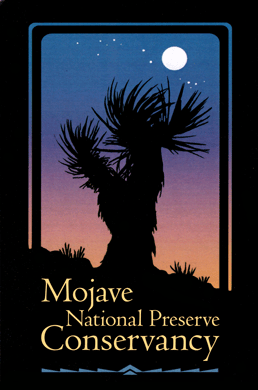Resources for Educators
Introducing Students to the Mojave
Students visit Kelso Dunes in the Mojave National Preserve
the mojave is our backyard and our classroom
Thousands of students in cities and towns across the Mojave Desert — from Las Vegas to Victorville, Palmdale to Pahrump, and Twentynine Palms to Needles — often lack opportunities to better understand the ecosystem in which they live. The Mojave should not be a mystery to these students, and there are many ways to tailor curriculum that increases their knowledge of, and appreciation for this amazing landscape. To achieve this, the Mojave National Preserve Conservancy developed materials that educators can use to incorporate the Mojave into their lesson plans, to include a wildlife guide and curriculum guide.
The Conservancy has also collaborated with educators to host overnight trips for 6th grade students in the Preserve using an itinerary and lessons that are consistent with curriculum standards. Whether you want to bring your students to the Mojave, or bring the Mojave to your classroom, we hope that the materials below can provide a useful starting point.
A guide to the Mojave
To provide students with a foundational understanding of the Mojave, the Conservancy developed the Mojave Explorers Wildlife Guide that aims to introduce them to its diverse landscape and many wild inhabitants. Educators can use this guidebook as a launching point for classroom and outdoor lesson plans.
View the full screen version of the Wildlife Guide with this link.
A Mojave curriculum
The Mojave can be integrated into unit and lesson plans across a number of standards, including writing, reading, and arts. Learning about the desert especially offers a pathway for learning science standards.
Students can construct a desert food web to identify the components and interactions of this ecosystem. They can learn about and identify different habitat types within the Mojave Desert and the organisms that call those habitats home. They can identify the survival and reproduction needs of those organisms, and their special adaptations.
The Mojave Explorers Curriculum Guide provides ideas for educators to weave the Mojave into lessons on Earth and life sciences, for elementary through middle school grade levels. Many of these activities also incorporate the Mojave Explorers Wildlife Guide.
Educators can download the curriculum guide as a PDF here.
The Curriculum Guide includes plans that can be tied back to California curriculum standards, including the following:
2-LS4-1 Make observations of plants and animals to compare the diversity of life in different habitats.
3-LS4-3 - Construct an argument with evidence that in a particular habitat some organisms can survive well, some survive less well, and some cannot survive at all.
3-LS3-1 - Analyze and interpret data to provide evidence that plants and animals have traits inherited from parents and that variation of these traits exists in a group of similar organisms.
3-LS3-2. - Use evidence to support the explanation that traits can be influenced by the environment.
3-LS4-2 - Use evidence to construct an explanation for how the variations in characteristics among individuals of the same species may provide advantages in surviving, finding mates, and reproducing.
4-LS1-1 - Construct an argument that plants and animals have internal and external structures that function to support survival, growth, behavior, and reproduction.
4-ESS2-1 - Make observations and/or measurements to provide evidence of the effects of weathering or the rate of erosion by water, ice, wind, or vegetation.
4-ESS2-2 - Analyze and interpret data from maps to describe patterns of Earth’s features.
5-LS2-1 - Develop a model to describe the movement of matter among plants, animals, decomposers and the environment.
5-PS3-1- Use models to describe that energy in animals’ food (used for body repair, growth, and motion and to maintain body warmth) was once energy from the sun.
MS-ESS2-2 - Construct an explanation based on evidence for how geoscience processes have changed Earth’s surface at varying time and spatial scales.
MS-LS1-5 - Construct a scientific explanation based on evidence for how environmental and genetic factors influence the growth of organisms.
MS-LS3-2 - Develop and use a model to describe why asexual reproduction results in offspring with identical genetic information and sexual reproduction results in offspring with genetic variation.
Both the Wildlife Guide and Curriculum Guide are designed to provide educators and students with resources to learn about the Mojave. We welcome feedback and ideas to enhance these resources. Please e-mail us with any questions or comments.


